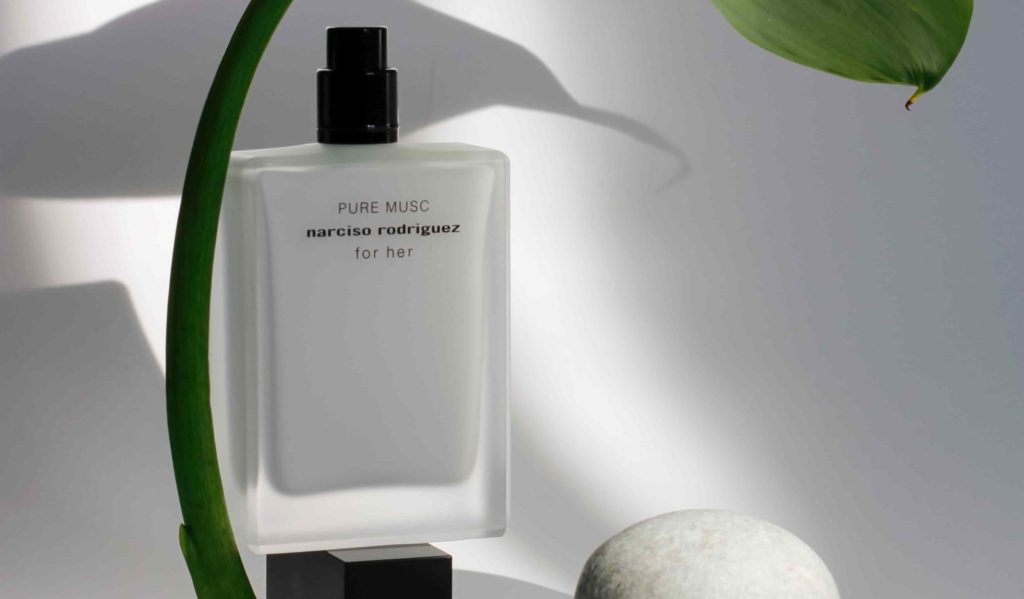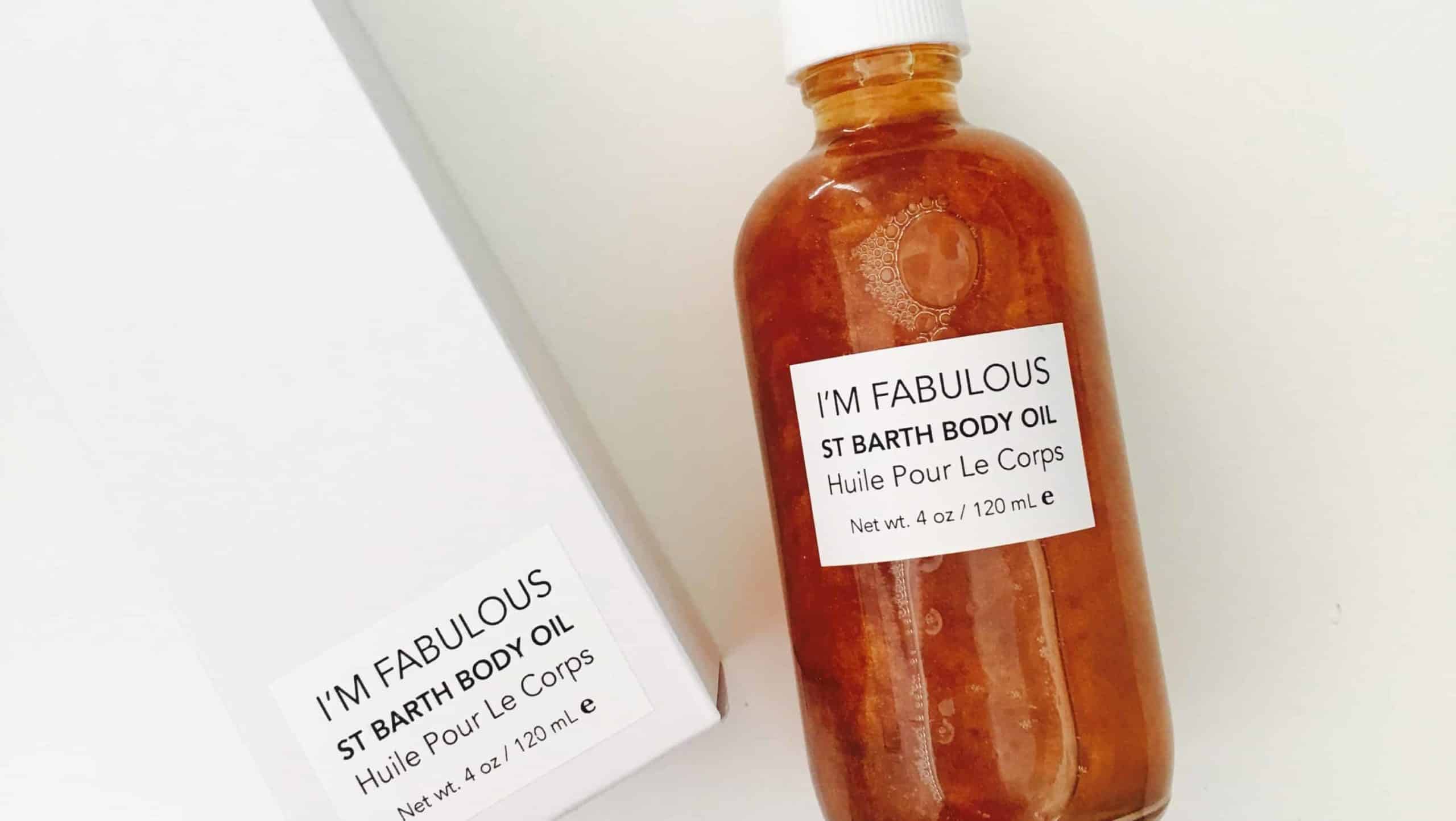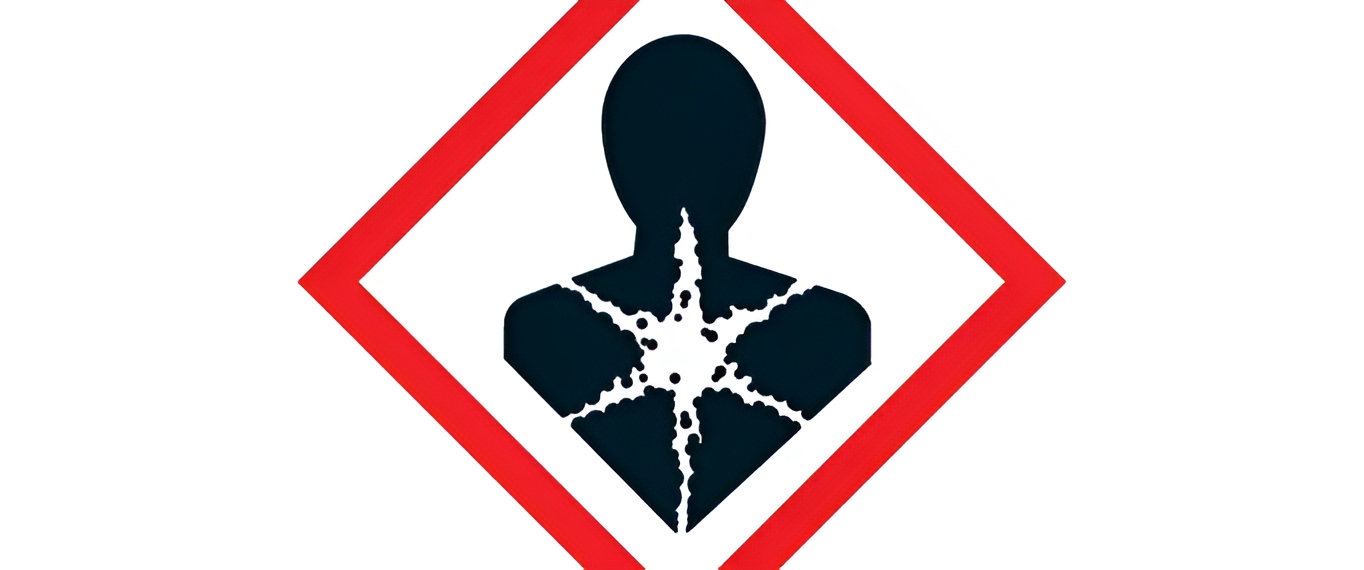Understanding the product labelling of cosmetics in Europe is crucial for any manufacturer or distributor selling cosmetic products on the European market.
These EU cosmetics labelling requirements are outlined in Regulation 1223/2009 and aim to ensure consumer safety and transparency as it provides specific rules governing the production and marketing of cosmetic products. Article 19 of the Regulation outlines the criteria for cosmetic product labeling. In this article, we will refer to the relevant paragraphs of that regulation.
Before focusing on the specific EU cosmetics labelling requirements, let’s first discuss the components that make up a cosmetic product or can be used to create one. These are:
- CONTAINER: This refers to the primary packaging that has direct contact with the product, such as tubes, jars, bottles, etc.
- PACKAGING: This is the box or case that encloses the container.
- CLAMP and TAG: These are devices that can be attached to the cosmetic product labeling. They are used when it is practically impossible to include the required information specified in letters d) and g).
- INSTRUCTION LEAFLET: This is an additional sheet included with the product. It is used to provide the required information by law in cases where it cannot be written on the packaging. It may also contain additional instructions deemed necessary or appropriate for the proper use of the product.
- LABEL: This is applied directly on the container or packaging when it is not possible or desired to print or screen-print the required inscriptions.
- PICTOGRAM: This symbol is used on the primary and/or secondary packaging of the products instead of a phrase indicating the presence of an added sheet.
What are the EU cosmetics labelling requirements?
Article 19 of the EU Regulation 1223/2009 says: “Without prejudice to other provisions in this Article, cosmetic products shall be made available on the market only where the container and packaging of cosmetic products bear the following information in indelible, easily legible and visible lettering”.
Each of the cosmetic product labeling requirements will be described below.
Fragrance Allergen Cosmetic Product Labeling: Safeguarding European Consumers
Labelling rules for fragrance allergens in Europe are a crucial aspect of consumer safety and informed choices. The European Union has instituted comprehensive regulations to address potential allergenic compounds in fragrances, safeguarding the health of its citizens. These rules require manufacturers to disclose specific fragrance allergens in their products, allowing consumers to make informed purchasing decisions.
The cosmetic product labeling requirements serve as a proactive measure to prevent allergic reactions and protect those who may be sensitive to certain fragrance components. Manufacturers are tasked with diligently adhering to these regulations, conducting comprehensive assessments and tests to identify and quantify potential allergenic substances in their products.
Navigating European Cosmetic Standards
Cosmetic manufacturers operating in Europe must navigate a complex regulatory environment, encompassing both overarching European standards and the unique requirements of individual countries. Take, for example, the French market, which ranks as the second-largest cosmetics market in Europe.
Understanding the requirements of labelling cosmetics and packaging in France is particularly crucial for those seeking to enter or expand in this lucrative market. Complying with these specific cosmetics regulations is vital to achieving success within the vibrant and highly regulated French cosmetic industry.
Amidst the diversity of European regulations, harmonising standards has become a top priority. These standards, which encompass aspects such as the German Packaging Act (VerpackG), serve as a foundation for manufacturers operating across the continent. The quest for uniformity in cosmetic product labeling and packaging aligns with the broader vision of a streamlined European cosmetics market, which offers both challenges and opportunities.
How to ensure compliance with cosmetic product labeling regulations in Europe
Before addressing the cosmetic product labeling content, it is crucial to conduct a Cosmetic Product Safety Report (CPSR). This report provides essential information such as warnings, the precise INCI list, and the date of minimum duration/PAO (Period After Opening).
Article 3 of Regulation 1223/2009 states:
“The cosmetic products made available on the market are safe for human health when used under normal or reasonably foreseeable conditions of use, taking particular account of the following: presentation, including compliance with Directive 87/357/EEC, labelling cosmetics instructions for use and disposal, any other indication or information from the responsible person defined in Article 4.
The presence of warnings does not exempt the persons defined in articles 2 and 4 from compliance with the other obligations set out in this regulation.”
Consequently, the product should provide all the necessary information to guide consumers not only in its correct usage but also to prevent improper use, considering reasonably foreseeable conditions. The CPSR, which entails the Safety Evaluation of the cosmetic product, is a mandatory requirement before placing the product on the market.
This evaluation is detailed in EU Regulation 1223/2009, which aims to ensure safer products by imposing strict safety requirements to protect human health. For more information on the specific requirements that each cosmetic product must meet, please refer to the official website of the European Union.
All cosmetic products must display the following mandatory information on both the container (inner label) and packaging (outer label):
- Name and address of the Responsible Person
- Nominal content
- Date of minimum duration or PAO
- Country of origin (if the product is imported into the community)
- Product function (unless it’s clear from its presentation)
However, there are exceptions for the following three items, which we will discuss in detail later in this article.
- Warnings
- Batch number
- INCI list
Please keep in mind that the items mentioned above are specified in EU Regulation 1223/2009, which outlines the cosmetic product labeling requirements UK and EU. However, it’s important to understand that various laws govern cosmetic product labeling, such as the Packaging & Waste regulations, which can vary from country to country. We encourage you to explore our article on Labelling and Packaging Regulations for more information, including details about recycling symbols.
Transitioning from Cosmetic Labelling to Packaging in Europe
After exploring the details of cosmetic product labeling in Europe, it’s crucial to broaden our perspective to the entire domain of cosmetic packaging. In the European context, packaging isn’t just about presenting a product attractively; it’s intertwined with stringent regulations focused on consumer safety and product integrity. As the landscape of cosmetic presentation evolves, understanding these regulations, including those related to labelling cosmetics, becomes paramount. If you’re keen to delve deeper into the nuances of packaging regulations, we invite you to read our detailed article on packaging regulations in Europe.
Tackling Packaging Waste: Europe’s Comprehensive Framework
In Europe, Extended Producer Responsibility (EPR) regarding the packaging waste of cosmetic products plays a vital role in the region’s sustainability initiatives. Being the second-largest cosmetics market in the world, Europe produces a significant amount of packaging waste. European authorities have responded to the environmental concerns by putting in place a comprehensive framework.
This framework places the onus on producers to oversee the entire life cycle of their packaging materials, encompassing aspects from design and manufacturing to collection, recycling, and safe disposal. This approach serves a dual purpose, aiming not only to mitigate the environmental impact but also to advance the concept of a circular economy.
What are the specific requirements and exceptions to take into account when it comes to the labeling of cosmetics?
Legibility and visibility of the inscriptions
One of the important EU cosmetics labelling requirements outlined in article 19 is that the inscriptions on cosmetic products must be indelible, easily legible, and visible. This means that they cannot be placed inside the packaging, such as on the internal closure flap of a box or case, for example.
However, it is acceptable to display the necessary inscriptions on any external part of the container or packaging, even if it’s not directly in the visual field of the product’s name, which is typically found on the front. Cosmetic products are designed to be user-friendly, making all parts of the packaging easily visible and accessible.
The only exception pertains to indicating the nominal content on the packaging of pre-packages that are different from the standard EEC ones. In such cases, cosmetic products in pre-packaging without the Estimated Symbol “℮” should display the content on the secondary packaging, in the same visible area as the product’s name. However, this requirement for labeling cosmetics does not apply to the container itself, where the content can be indicated anywhere.
To ensure durability, the inscriptions for cosmetic product labeling must be made with indelible characters, using stamps, inks, or labels that will withstand the test of time. Additionally, the regulations for pre-packaging determine the specific height of the characters to be used when indicating the nominal content.
4.2 Abbreviations
Abbreviations are allowed only for the name or company name and address of the Responsible Person, as long as they still allow for easy identification. For example:
Original: Red Italiana SpA via Santa Caterina da Forlì 25 – Monza (MB)
Abbreviated: Red It. – via SC da Forlì 25 – MONZA
4.3 Warnings
In cases where it is practically impossible to include the necessary information on the product itself, such as special precautions or the list of ingredients, it can be provided on an instruction leaflet, band, or tag attached to the product. When using such additional means of information, it’s important to indicate their presence on both the container and the packaging. This can be done by including an abbreviated indication like “see attached sheet” or by using the hand-in-book symbol, as shown in Annex VII, point 1 of Regulation 1223/2009.

4.4 Languages
Certain entries on the label need to be translated into the official languages of the country where the product is being marketed. These entries include:
- The nominal content
- The date of minimum duration (if the symbol mentioned in point 3 of Annex VII of Regulation 1223/2009 is not used)
- Special precautions of use and warnings of the substances
- The product function (unless it’s already clear from its presentation)
In some countries like France, Bulgaria, Austria, Poland, Portugal, and Slovakia, there is a requirement for the entire label, including any claims made, to be translated into the national language(s) of that particular country.
Cosmetic product labeling and claims in the UK
Cosmetic product labeling and claims in the UK follows similar rules as in the EU. When a UK cosmetics label and claim meets the European requirements, it usually complies with the UK market obligations, too. The cosmetics label and claim in the UK has a few specificities like the UKCA marking for aerosols, the labelling of the UK Responsible Person address, the country of origin if the product is imported outside of the UK … To know more about the UK regulation requirements, please read the blog article on UK Cosmetics Regulations: A Guide to compliance with UK regulations. Please check our Cosmetics Registration UK services page for additional information.
Breaking Down Each Component of the Label
5.1 The Nominal Content
When labeling cosmetics, every cosmetic product should clearly display the indication of its content at the time of packaging on both the container and the packaging itself.
However, there are certain exceptions to the requirement of declaring the nominal content. These exceptions include:
- Products containing less than 5 grams or 5 millilitres.
- Free samples.
- Single doses.
- Pre-packaged items sold as a set, where the weight or volume indication doesn’t significantly impact the consumer’s choice. In such cases, the number of pieces included should be stated on the package, unless it’s easily verifiable from the outside at the time of purchase.
- When it comes to indicating the content, specific rules for pre-packaging apply.
- Solid or powder products should be indicated by mass (in grams)
- liquid or paste products should be indicated by volume (in millilitres)
For instance, for products like deodorant sticks and lipsticks, which are “hot poured” and in a liquid state during filling, the content should be indicated in volume (in millilitres).
Moreover, when labeling cosmetic, the content information should be provided in the legal metric system. However, it’s possible to include additional units of measurement (such as ounces) as long as the indication in ounces is equal to or smaller in size than the legal measurements. Labelling cosmetics correctly, especially with accurate nominal content, ensures compliance with legal standards while maintaining clarity for the consumer.
5.1.1 Entries with Ambiguities
Entries related to the content must not include any indications that are unclear or ambiguous, such as using terms like “about” or similar expressions. It is also not allowed to use marks that might cause confusion with the “℮” (CE pre-packaged) and “З” (reversed epsilon relating to aerosol products) symbols.
5.1.2 The Estimated Symbol “℮”
The Estimated Symbol “℮” is a declaration made by the manufacturer indicating that the cosmetic product has undergone statistical production controls as required by Directive 76/211/EEC.
In addition to the regulations mentioned in Article 19, cosmetic products in EC pre-packaging must bear the letter “℮” in accordance with the pre-packaging legislation. This letter must be indelible, have a minimum height of 3 mm, and conform to specific graphical standards.
If a cosmetic product is sold with the container placed inside a package, the Estimated Symbol should only appear on the package, not on the container itself. However, it must be positioned in the same field of vision as the indication of the nominal quantity, meaning it should be on the same side of the packaging where the information about the product’s contents is displayed.

5.1.3 Placement of Content
There are no specific cosmetics labelling requirements regarding where the information about the product’s contents should be placed on the packaging. It should be displayed both on the container and the packaging. The only exception applies to non-EEC pre-packaged cosmetics that do not bear the Estimated Symbol next to the content. For these products, the content information on the secondary packaging should be in the same visual area as the product name, except for pre-packaging exclusively intended for professional use.
5.1.4 Character Height
When labeling cosmetic, the height of the characters used for metrological inscriptions is also determined by pre-packaging standards. Specifically, the nominal quantity (nominal mass or nominal volume) of the product must be expressed in kilograms or grams, litres, centilitres, or millilitres, and the figures should meet the minimum height requirements listed below:
Nominal Content (Minimum Character Height)
- 50g or ml (2mm)
- 50 g or ml ≤ 200g or ml (3mm)
- 200 g or ml ≤ 1000g or ml (4mm)
- 1000g or ml (6mm)
The content indications should be followed by the symbol of the corresponding unit of measurement. Therefore, the correct format is:
50 mL or 50 ml or 50 g.
It is incorrect to indicate: ml 50 or g 50.
Please note that grams are abbreviated as “g” and not “gr.”
5.2 The Minimum Duration Date
Every cosmetic product must clearly display the date of minimum duration on both the container and the packaging if its shelf life is calculated to be less than thirty months. For products with a shelf life exceeding 30 months, the Period After Opening (PAO) should be indicated on both the container and the packaging.
5.2.1 The Date of Minimum Duration
The date of minimum duration should be indicated by using the hourglass symbol (as described in Annex VII, point 3) on both the container and the packaging. Alternatively, the wording “Use preferably by…” should be used, followed by the month and year or the day, month, and year.
It is not permitted to use any other phrases besides those specifically stated by the law. If it is not possible to indicate the date after the hourglass or the mandatory wording “Best before…”, the exact location on the packaging (container, packaging, or label) where this date appears must be specified.
If the date of minimum duration is provided, it may be accompanied by instructions for storage and handling conditions. Complying with these conditions will help maintain the product’s stability until the indicated date.
5.2.2. The Period After Opening
After opening a product, it is important to report the duration for which it can be safely used without causing harm to the consumer. This is known as the post-opening period (PAO). To indicate the PAO, the symbol depicted in Annex VII point 2 of Regulation (EC) 1223/2009, which represents an open jar of cream, must be affixed on both the container and the packaging. The symbol should be followed by the number of months, years, or a combination of both, representing the recommended period of safe use after opening.
The responsibility for including the PAO symbol lies with the individuals or entities that place the product on the market. However, there are some products that may not require the PAO symbol on their packaging. These products, depending on their composition and packaging, pose an insignificant risk of alteration. For example:
- Products packaged in a way that provides specific protection to the contents and prevents contamination, such as aerosols or packaging that avoids direct contact with the external environment.
- Products that naturally inhibit the growth of microorganisms due to factors such as high alcohol content, low presence of “free water,” or very high or very low pH levels.
- Single-dose products.
While there are no specific legal dimensions for the PAO symbol, it should be visible, indelible, and easily readable. It is important to maintain the proportions between the different parts of the symbol.
In addition to indicating the PAO, it is advisable to provide instructions regarding the storage and handling conditions that will help maintain the product in optimal condition for as long as possible.
5.3 Precautions and Warnings for Product Use
It’s crucial to include important precautionary and warning information on both the container and packaging of the product. These instructions should be written in the official language(s) of the country where the product is being sold.
In cases where it’s not feasible to include this information directly on the container or packaging, the regulations allow for alternative methods. This could involve providing an instruction leaflet, a band, or a tag attached to the product. However, it’s essential to clearly indicate on both the container and packaging that additional information is provided using an abbreviated reference like “see attached sheet.” Alternatively, the hand-in-book symbol shown in Attachment VII point 1 of the Regulation can be used.
Certain substances listed in Annexes III, V, and VI of Regulation 1223/2009 require specific attention. In addition to providing health-related instructions, it’s also mandatory to disclose their presence in the product. For instance, if a product contains the preservative chlorobutanol, it must be clearly labelled with the indication “contains chlorobutanol” as specified in the Regulation.
It’s important to emphasise that these instructions and indications are not only mandatory but also in addition to the requirement of declaring all the ingredients present in the product on the secondary packaging using the International Nomenclature of Cosmetic Ingredients (INCI) denomination.
5.3.1 Cosmetic Products for Professional Use
To ensure clear communication with professional operators, Cosmetics Europe recommends using the messages provided in the COLIPA RECOMMENDATION 24b titled “Hair dye labeling – information for professionals.“ These indications should be written in easily readable and identifiable characters and placed in a suitable area of the packaging. Each producer will determine the specific location on the primary and/or secondary packaging, as well as on the package insert.
The responsibility for including this information lies with the person in charge of placing the products on the market. It is their responsibility to provide comprehensive information about the optimal conditions for using the cosmetic products.
5.4 The Batch Number
All cosmetic products must display a manufacturing batch number or a reference that allows for the identification of the batch. This information should be present on both the container and the packaging.
The manufacturing batch number refers to a unique combination of numbers, letters, or both, which accurately identifies a specific quantity of cosmetic product (batch) manufactured within a particular time frame using identifiable and specific raw materials. Each company is free to choose the coding method they find most suitable for assigning batch numbers.
The batch number should be clearly visible, although the law does not specify a mandatory location. Therefore, it can be placed anywhere on the packaging or container as long as it is external. It is important to note that if the cosmetic product is too small to accommodate the batch number, it can be solely indicated on the packaging.
The batch number should be indelible and must be applied using ink or embossing. It should be easily legible, even though there are no EU cosmetics labelling requirements regarding the height of the characters. The Responsible Person is responsible for identifying and decoding the batch number.
In cases where the product is too small to display the batch number directly, it can solely appear on the packaging. It cannot be indicated on a band or any other attached means.
Please be aware that this exception only applies to products sold in individual packages and does not apply to multiple “transport” packaging that contains several bottles sold individually, without a case. In such cases, the batch number must be affixed to each bottle.
Lastly, there may be exceptional situations where it is justified not to display the batch number on individual single doses, primarily due to the small size of the packages or the specific types and shapes of materials used (e.g., bath pearls). In such cases, the manufacturing batch should be indicated on the collective container.

5.5 Country of Origin
The country of origin must be indicated on the packaging of cosmetics manufactured in countries that are not members of the European Union. It is mandatory in these cases. Please note that Switzerland, the Principality of Monaco, the United Kingdom, and San Marino are not part of the European Union.
5.6 Product Function
Product labels should clearly indicate the function of each product, unless it is already evident from its presentation.
This requirement was implemented to provide consumers with accurate information about the actual function of the product, aiming to prevent misuse.
To comply with this provision, it is important to specify the functionality of the product and avoid using generic indications or descriptions in other languages.
We should keep in mind that the name of a product might not always be sufficient to identify its functionality and application. Even commonly used terms like “milk,” “lotion,” “emulsion,” or “serum” need to be accompanied by a specific field of application to describe the product’s functionality adequately.
5.7 List of Ingredients
Providing a clear and informative list of ingredients is essential to ensure that consumers have accurate information about the product. It enables them to make informed choices and avoid using cosmetics that contain potentially harmful ingredients.
The list of ingredients should be presented in descending order of their weight, up to 1% by weight, followed by a random order for the remaining ingredients. This list should be prominently displayed on the product packaging.
To ensure transparency and consistency across Europe, a standardised naming system known as the International Nomenclature Cosmetic Ingredients (INCI) is used. The INCI names for each ingredient can be found in the European Inventory of Cosmetic Ingredients, with the latest revision dating back to June 2022.
It is mandatory to list the ingredients using their INCI names. However, if an INCI name is not available for a particular ingredient, an alternative name from the Inventory can be used as a temporary solution.
It is important for the raw material supplier or cosmetic manufacturer to take the necessary steps to obtain the INCI name from the competent committee. Once available, the INCI name should be immediately used for ingredient declarations.
It is crucial to note that trade names cannot be used as substitutes for chemical or INCI names.
5.7.1 Dyes
Dyes can be listed in any order alongside other ingredients. Cosmetic dyes are substances that are identified by their Color Index (CI) number or the designated denomination mentioned in the annex itself.
Some colourants listed in Annex IV of Regulation 1223/2009 have two common names: the Color Index number and the common chemical name. An example of this is titanium dioxide (Titanium dioxide/CI 77891). The guideline to follow in such cases is as follows: if the substance is used in the product as a colourant, the INCI name corresponding to the Color Index number must be used. However, if the function of the ingredient is different from that of a colourant (e.g., opacifier, abrasive, etc.), the INCI name corresponding to the chemical name should be used.
5.7.2 Perfume and Aroma
Odorant and flavouring compounds, as well as their raw materials, should be indicated respectively as “parfum” and “aroma.”
5.7.3 Impurities
Two types of substances are not considered ingredients and, therefore, should not be included in the list:
- Impurities contained in the raw materials used.
- Secondary technical substances used in the blend but not present in the composition of the finished product.
5.7.4 Practical impossibility
In cases where indicating the ingredients becomes practically impossible, the INCI list may be provided on an instruction sheet, a band, or a tag attached to the product. However, it is essential to add a verbal indication or the hand-in-book symbol to the labels.
These are the general guidelines for an appropriate cosmetic product labeling. However, specific cases and claims may require additional considerations. Learn more from our in-depth article about regulatory compliance of cosmetic products in Europe.
If you still have doubts about how to label your cosmetics, please let us know, and we will assist you in ensuring compliance with the regulations.
Navigating the Complexities of Registering Cosmetics in Europe
While understanding EU cosmetics labelling requirements is important, ensuring compliance extends beyond just the product itself. Registering cosmetics in Europe involves a multi-step process with specific regulations varying depending on the target market. This can be complex and time-consuming, especially for new businesses or those unfamiliar with the European regulatory landscape.
Partnering with an expert like TAOBE Consulting can significantly streamline the cosmetic registration Europe process. Our team of consultants can provide in-depth knowledge of European cosmetic regulations and can guide you through each step, ensuring your product meets all compliance requirements and reaches the market efficiently.
Visit our page on registering cosmetics in Europe, to learn more about our comprehensive services.



